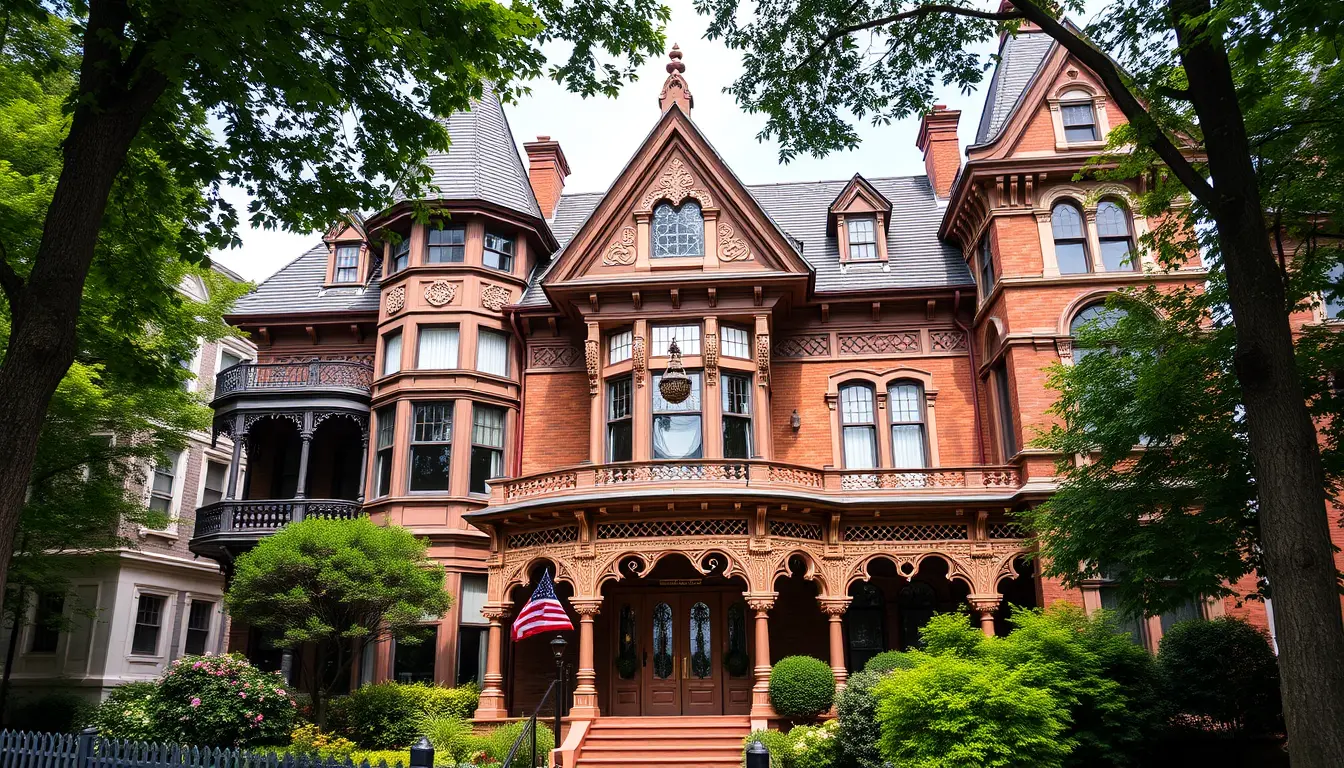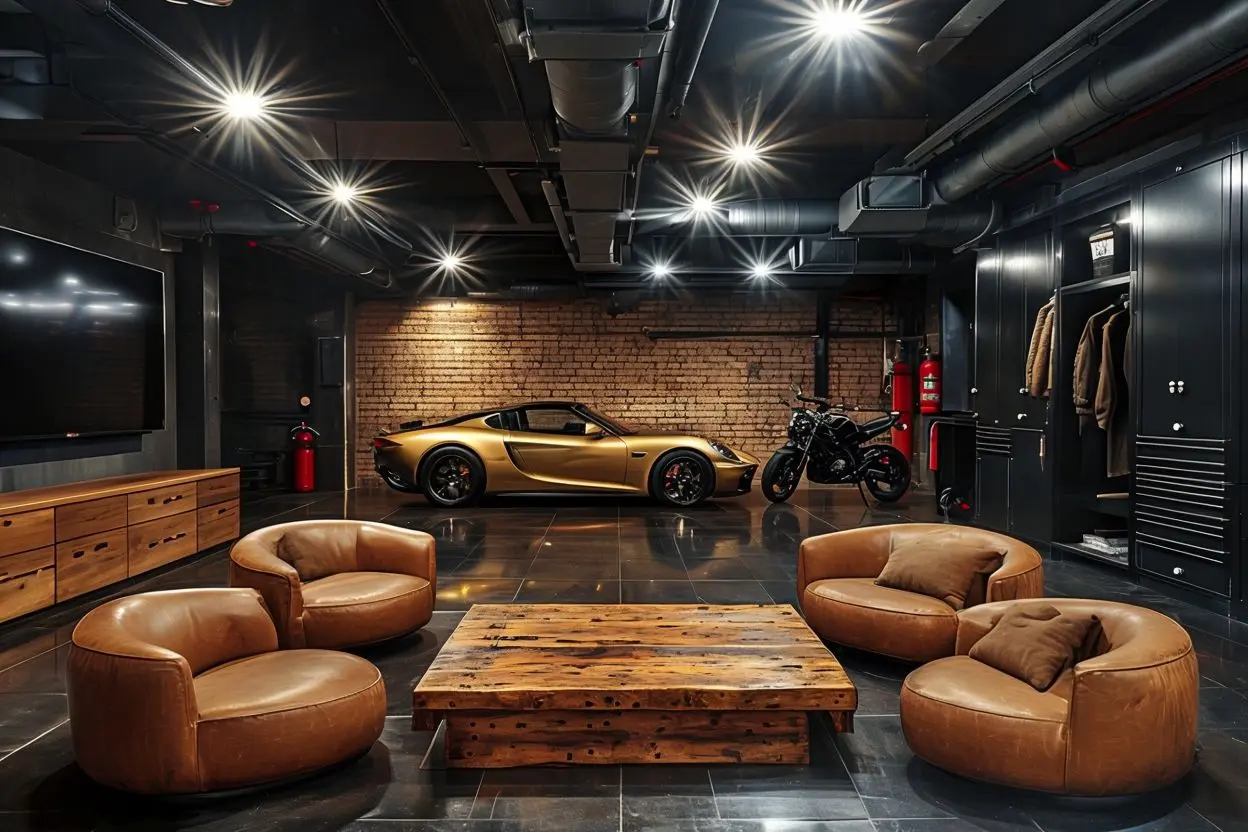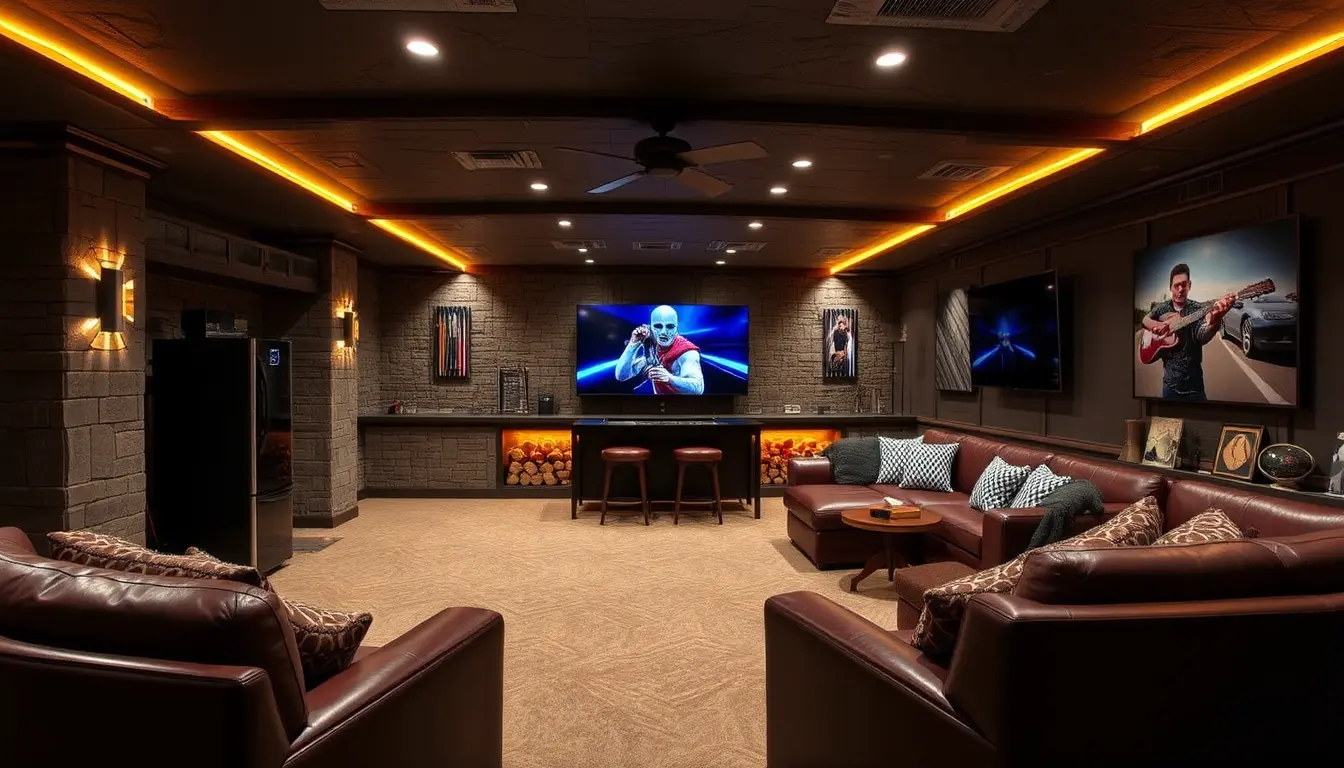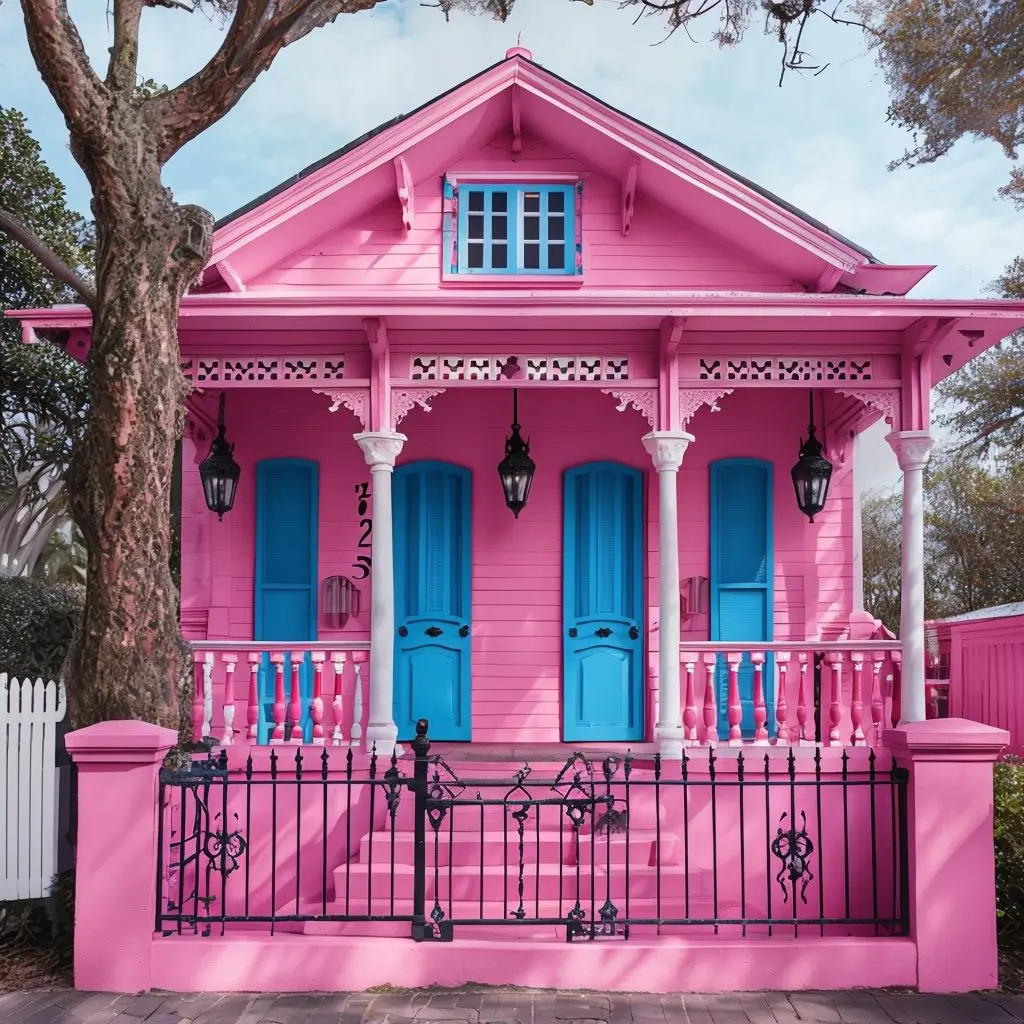Why Victorian House Design Is Still a Timeless Choice for Your Home
You know that feeling when you walk into a beautifully decorated Victorian house? There’s something magical about those high ceilings, ornate details, and rich textures that just takes your breath away. I’ve spent years studying and working with Victorian interior design, and I’m excited to share how you can bring this timeless elegance into your own home.
Victorian interior design isn’t just about recreating a museum piece – it’s about capturing the essence of an era known for its luxury, attention to detail, and unabashed celebration of beauty. Born during Queen Victoria’s reign (1837-1901), this style has evolved into something that can work beautifully in today’s homes. Whether you’re looking to go full Victorian or just add a touch of that vintage charm, I’ve got you covered.
In this guide, we’ll explore everything from the historical roots of Victorian design to practical tips for incorporating these elements into your modern space. Trust me, you don’t need to live in a period home to embrace this style – it’s all about finding the right balance between old-world charm and contemporary comfort.
The Essence of Victorian Design: A Historical Overview
Let me take you back to the mid-1800s when the Industrial Revolution was changing everything about how people lived. This was a time of prosperity and innovation, and it showed in people’s homes. The Victorians weren’t shy about displaying their success, and their interior design reflected this confidence.
What makes Victorian interiors so special? Picture elaborate ceiling moldings that draw your eye upward, dark wood paneling that adds warmth and gravitas, and furniture that’s practically artistic sculpture. I’ve seen modern homeowners gasp when they first encounter authentic Victorian rooms – there’s just nothing quite like it.
The Victorians believed in “more is more” long before it became a design catchphrase. They combined patterns fearlessly, layered textures with abandon, and weren’t afraid to make a statement. But here’s what I love most: behind all that decoration was a deep appreciation for craftsmanship and quality that we still value today.
Key Elements of Victorian Interior Design
Furniture That Makes a Statement
In my experience, Victorian furniture is where this style shines. The iconic Chesterfield sofa, with its deep button tufting and rolled arms, is probably the most recognizable piece. But don’t forget about those gorgeous mahogany cabinets with their intricate carvings, or the curved-back dining chairs that make every meal feel special.
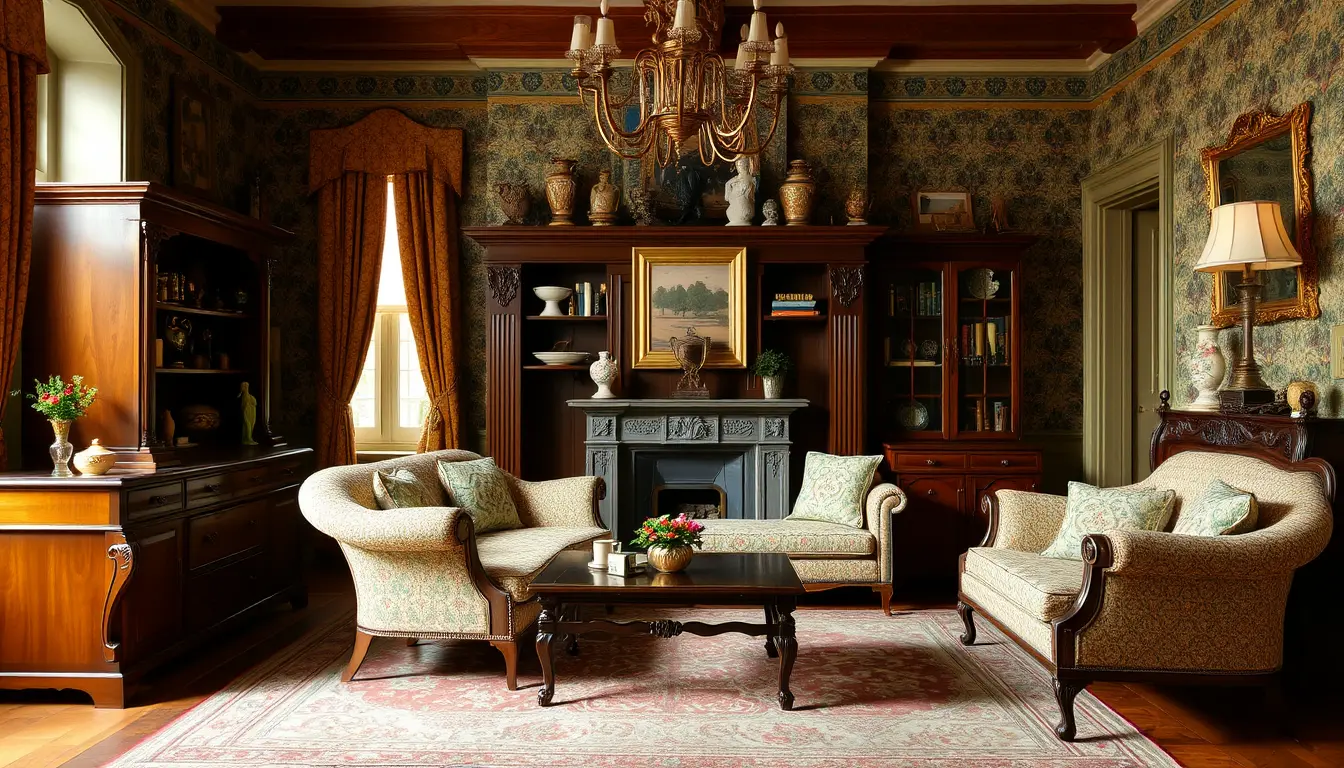
What I recommend to my clients is starting with one statement piece – maybe a vintage fainting couch or an ornate sideboard. These pieces become instant conversation starters and can anchor your entire room’s design.
Colors That Tell a Story
The Victorian color palette might surprise you. While we often think of dark, moody colors (and yes, those deep burgundies, forest greens, and rich navies were popular), Victorians also used lighter shades in their homes. I love how they weren’t afraid to mix different tones to create depth and interest.
For a modern take, try pairing traditional Victorian dark colors with contemporary neutrals. I recently helped a client combine a deep purple accent wall with light gray furnishings, and the result was stunning.
Textures That Beg to Be Touched
Here’s where Victorian design is fun. Think velvet sofas you can sink into, brocade curtains that catch the light, and leather-bound books that add character to any shelf. In my own home, I’ve mixed different textures to create interest – a velvet armchair next to a wooden side table, topped with a marble lamp.
Nothing says Victorian quite like a crystal chandelier catching the light. But lighting in Victorian homes wasn’t just about the ceiling – wall sconces, table lamps, and even candelabras all played their part. I always tell my clients that good lighting is like jewelry for your room – it should sparkle and add glamour.
Victorian Decor in Modern Spaces
Let’s talk about how to make Victorian-style work in today’s homes. I’ve helped many clients strike this balance, and here’s what I’ve learned: it’s all about choosing your moments.
Start by selecting one Victorian element as your room’s focal point. Maybe it’s an antique mirror with an ornate gold frame or a vintage armchair reupholstered in a modern fabric. Then, keep the rest of your space relatively simple to let that piece shine.
Here’s a trick I love: use Victorian-inspired patterns in contemporary colors. Those intricate damask patterns that Victorians loved look fresh and modern when done in gray or pale blue instead of traditional dark colors.
Working with Victorian Colors Today
The key to using Victorian colors in modern spaces is balance. In my living room, I’ve paired a deep navy accent wall (very Victorian) with crisp white trim and light gray furniture. The result feels both classic and current.
Making Victorian Accessories Work
You don’t need to fill your home with antiques to get the Victorian look. I often recommend mixing periods – try placing a Victorian-style mirror above a modern console table, or using vintage-inspired throw pillows on a contemporary sofa.
Room-by-Room Victorian Design Tips
From my experience working with hundreds of families, here’s what happens when you nail the minimalist family room design:
Let me walk you through each room and share some detailed tips I’ve learned from both restoring Victorian homes and helping clients create Victorian-inspired spaces. I’ll include specific elements, color combinations, and furniture arrangements that have worked beautifully in real projects.
Living Room: Creating Your Modern Parlor
The living room was the heart of a Victorian home – they called it the parlor – and it’s where you can embrace those gorgeous Victorian details. Here’s how to make it work:
Furniture Arrangement
* Create conversation areas with seating facing each other. I love using a Chesterfield sofa as the anchor, paired with two Victorian-style
armchairs at a 45-degree angle.
* Include at least one small sofa table or round accent table between chairs – Victorians loved their tea, and you’ll want surfaces for drinks and
books.
* Consider a fainting couch or chaise lounge near a window – it adds authentic Victorian charm and creates a perfect reading nook.
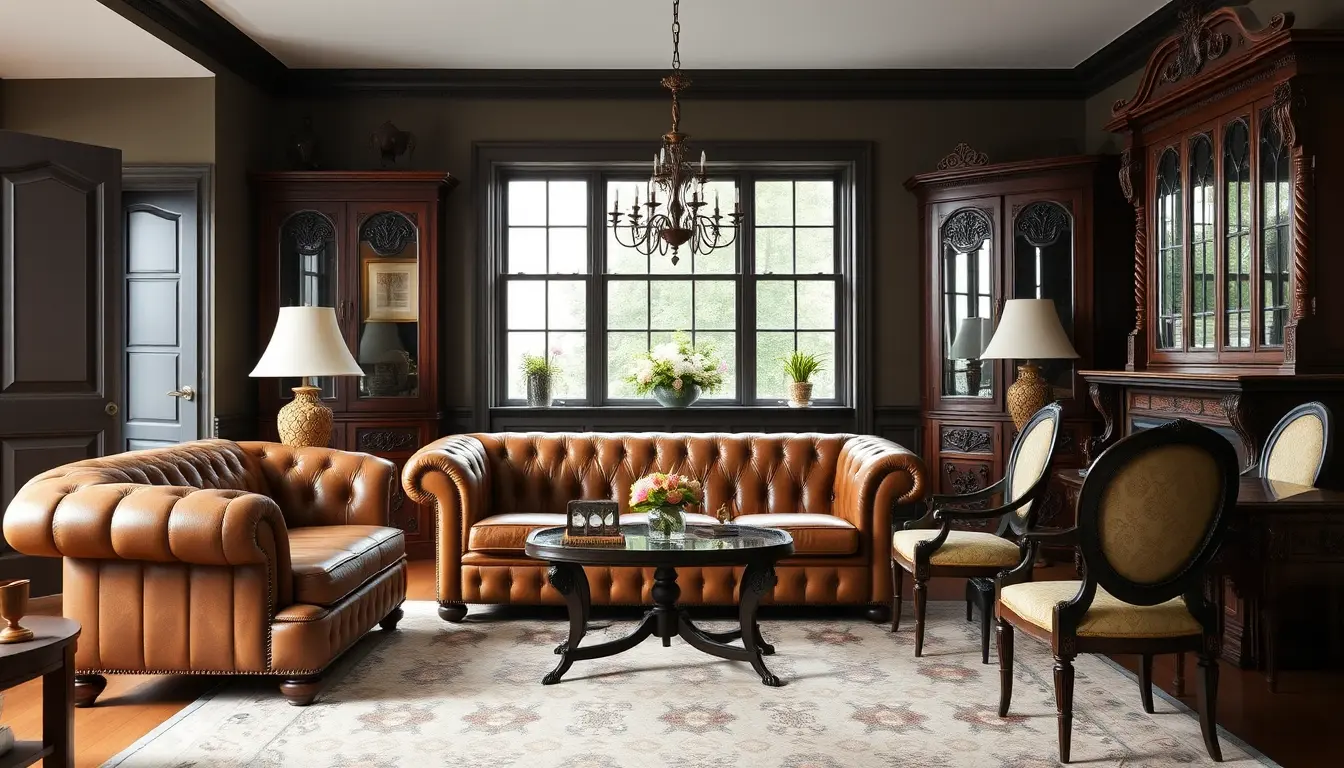
Architectural Details
* If your ceilings are high enough, install a picture rail about 18 inches below the ceiling. You can hang artwork from it just like the Victorians did.
* Add ceiling medallions around light fixtures – they’re surprisingly easy to install and make a huge impact.
* Install decorative moldings at baseboard level and chair rail height. Pro tip: paint them the same color as your walls for a modern twist on
Victorian style.
Decor Elements
* Layer your window treatments: start with lace panels closest to the window, add heavy drapes in velvet or silk and top with a decorative valance or pelmet box.
* Place an ornate mirror above your fireplace – the bigger, the better. I recently helped a client install a floor-to-ceiling gilt mirror, and it transformed the room.
* Add plenty of cushions in different Victorian patterns (think damask, stripes, and florals) but in coordinating colors to avoid chaos.
Kitchen: Victorian Charm Meets Modern Function
Creating a Victorian-inspired kitchen while keeping it functional for modern life can be tricky, but I’ve found some great solutions:
Cabinetry
* Choose raised-panel cabinet doors painted in cream or white, with glass-front upper cabinets to display your best dishes.
* Add decorative corbels under upper cabinets and crown molding at the top – these details make stock cabinets look custom.
* Install beadboard panels on the ends of cabinets and islands for authentic Victorian detail.
Countertops and Backsplash
* Use marble (or marble-look quartz for easier maintenance) for countertops – it’s perfectly period-appropriate.
* For backsplashes, I love combining subway tiles with a decorative border tile at eye level.
* Consider copper or brass accents – a copper farmhouse sink makes a stunning focal point.
Lighting and Hardware
* Install pendant lights with vintage-style glass shades over islands and eating areas.
* Use brass or oil-rubbed bronze hardware – I recommend cup pulls for drawers and glass knobs for upper cabinets.
* Add under-cabinet lighting to create ambiance and functionality.
Bedroom: Your Victorian Sanctuary
Victorian bedrooms were all about luxury and comfort. Here’s how to create that feeling:
The Bed
* A four-poster or canopy bed is ideal, but if that’s too much, choose an upholstered headboard in velvet or tufted leather.
* Layer your bedding: start with crisp white sheets, add a quilted coverlet, top with a plush duvet, and finish with a throw at the foot of the bed.
* Use at least four euros and two standard pillows, plus decorative cushions in varying sizes and patterns.
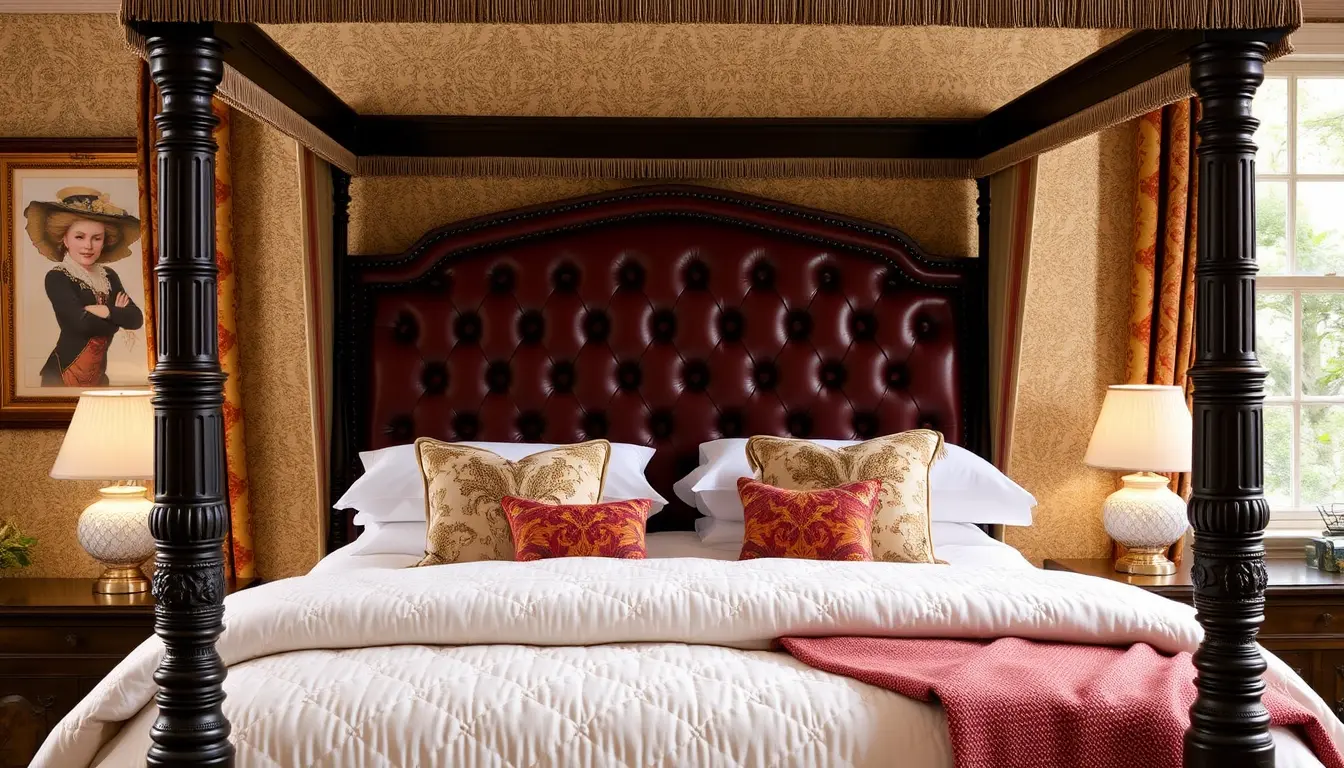
Storage and Dressing Area
* Include a dressing table with a mirror – I love using antique vanities, but you can create the look with a console table and an ornate mirror.
* Add an upholstered ottoman or small chair for the dressing area.
* Choose wardrobes with mirrored doors if you don’t have built-in closets – they’re very Victorian and add light to the room.
Walls and Windows
* Try Victorian-style wallpaper on one wall – I often use it behind the bed as a focal point.
* Install floor-length curtains with tiebacks, ideally in silk or velvet.
* Add picture molding to create panels on the walls – paint them the same color as the walls for a subtle effect.
Bathroom: Victorian Luxury
Victorian bathrooms can be absolutely stunning when done right. Here’s how to create that spa-like Victorian feel:
Key Features
* If you can install a clawfoot tub, make it the centerpiece. Paint the exterior in a bold color for extra impact.
* Use a pedestal sink or a vanity made from a converted piece of furniture.
* Install a pull-chain toilet or a modern version with vintage-style details.
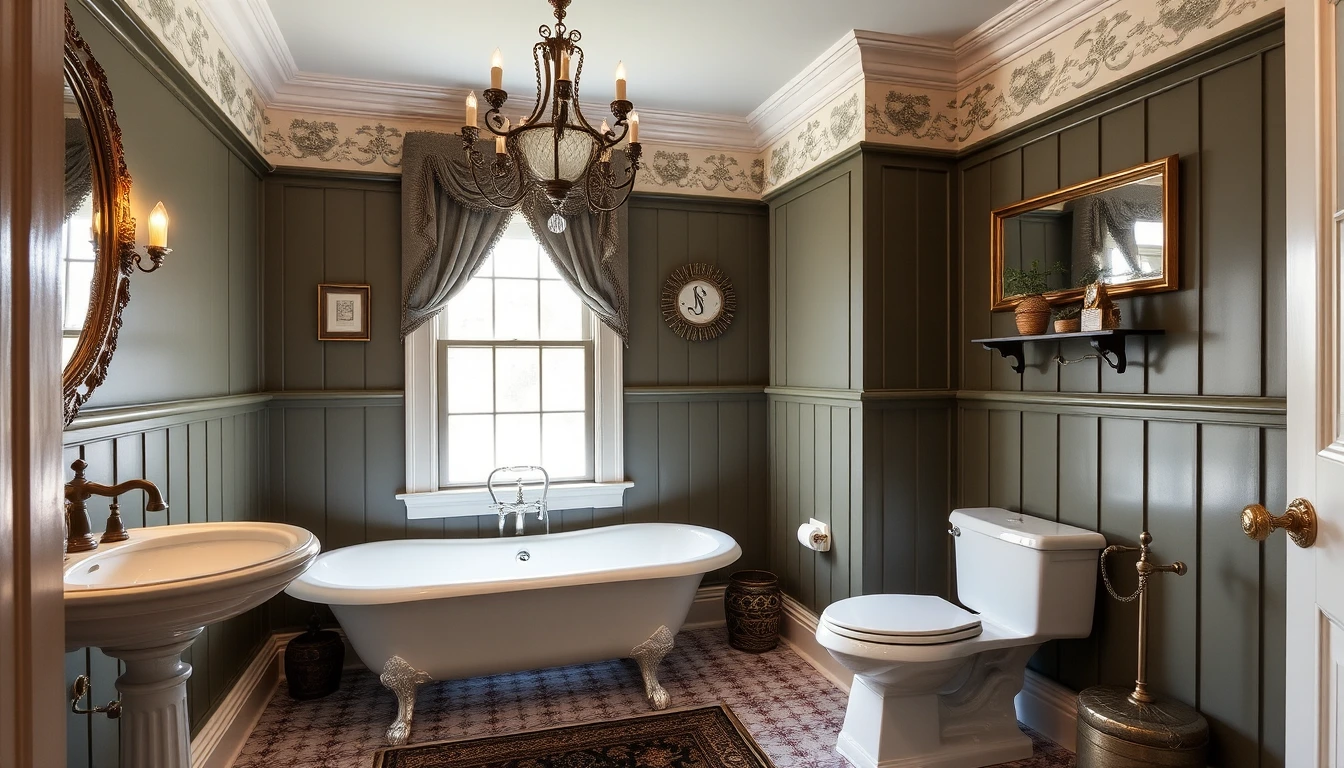
Tiles and Flooring
* Combine white subway tiles with black accent tiles for a classic Victorian look.
* Use hexagonal floor tiles in black and white, or try a more complex pattern with small mosaic tiles.
* Consider adding a border of decorative tiles at waist height.
Accessories and Storage
* Install an ornate mirror with a gilt frame above the sink.
* Use glass shelves with brass brackets for storage.
* Add a small chandelier or vintage-style sconces – just make sure they’re rated for bathroom use.
Hallways and Entryways: Making an Entrance
Don’t overlook these spaces – they set the tone for your entire home:
Flooring and Walls
* Use patterned tile or hardwood with an inlaid border in your entryway.
* Install wainscoting or chair rail molding along hallway walls.
* Choose bold wallpaper above the chair rail – Victorians loved patterns in their hallways.
Lighting and Furniture
* Hang a statement chandelier in the entryway if ceiling height allows.
* Place wall sconces every 6-8 feet along hallways.
* Include a hall tree or console table with a mirror above it – perfect for last-minute outfit checks.
Decorative Elements
* Create a gallery wall with vintage-style frames – mix photographs with botanical prints and mirrors.
* Add a runner in a Victorian pattern – just make sure it’s durable enough for high-traffic areas.
* Include some small accent tables along the hallway if space permits – they’re perfect for displaying plants or collectibles.
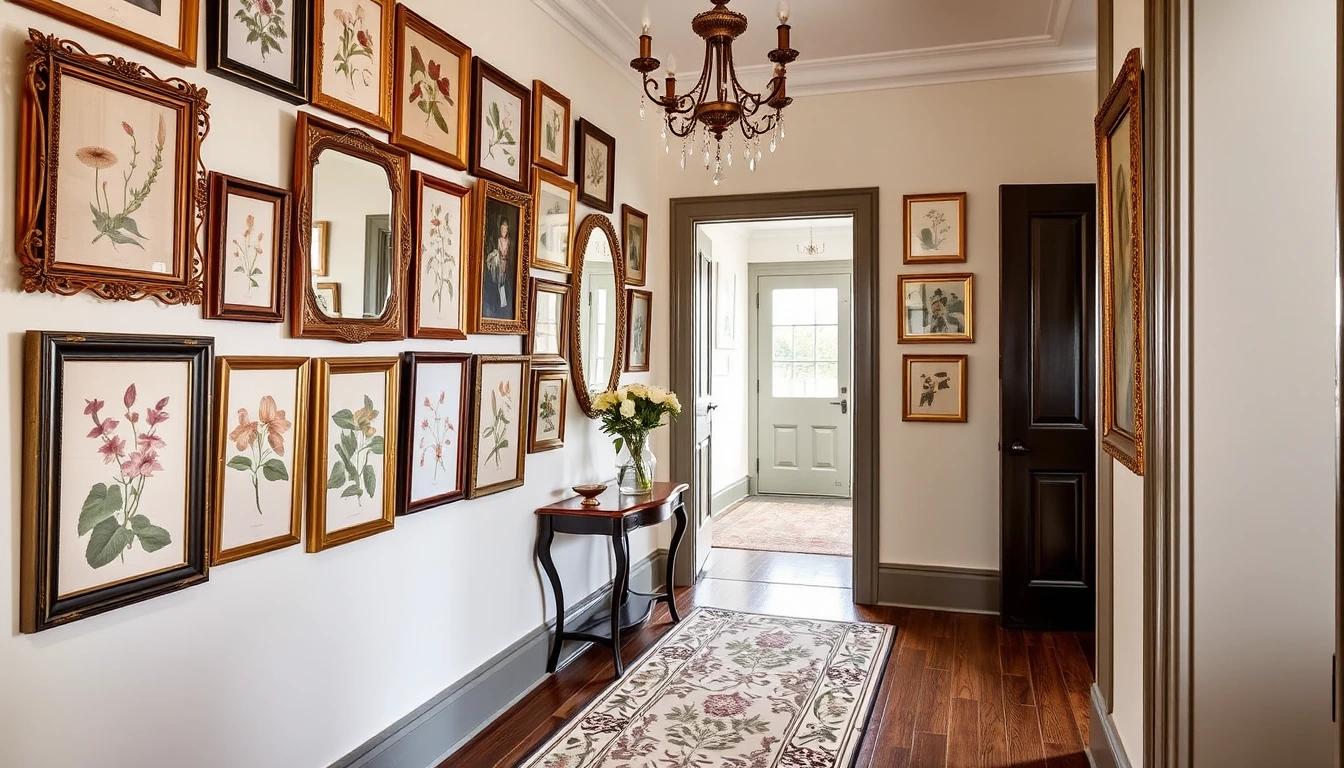
Trending Victorian Interior Design Ideas
As someone who keeps a close eye on interior design trends, I’ve noticed something fascinating: Victorian elements are having a major moment right now. Let me share some exciting ways people are reimagining this classic style for modern living.
Victorian Maximalism: Going Bold and Beautiful
The maximalist movement has brought the Victorian style back into the spotlight in a big way. Here’s what I’m seeing:
Pattern Mixing
* Designers are fearlessly combining Victorian patterns in new ways – think William Morris florals with geometric prints and stripes
* Dark moody florals are being used on unexpected pieces like kitchen cabinets and ceiling treatments
* Traditional Victorian patterns are being reproduced in oversized scales for dramatic impact
Color Experimentation
* Deep jewel tones are being paired with unexpected neons for a modern twist
* Traditional Victorian colors are getting updated with metallic accents
* Monochromatic rooms using Victorian patterns in varying shades of the same color
Layering and Texture
* Multiple rugs layered in the same space
* Mix of vintage and modern textiles
* Combination of different metallic finishes in the same room
The “Vintage Remix” Trend
There’s a growing trend of mixing Victorian pieces with other design eras. Here’s how it’s being done:
Furniture Combinations
* Victorian settees paired with mid-century modern chairs
* Ornate Victorian mirrors above sleek, contemporary consoles
* Antique Victorian cabinets used to house modern electronics
Material Contrasts
* Victorian furniture reupholstered in modern fabrics like bouclé or performance velvet
* Traditional forms rendered in unexpected materials (like a Victorian-style chair in clear acrylic)
* Mixing ornate Victorian metalwork with industrial elements
Sustainable Victorian
Antique Revival
* Growing preference for authentic antique pieces over reproductions
* Restoration of Victorian furniture using eco-friendly methods
* Emphasis on buying well-made pieces that will last generations
Sustainable Materials
* Use of reclaimed Victorian architectural elements
* Modern eco-friendly fabrics that mimic Victorian patterns and textures
* Locally sourced materials for Victorian-style renovations
Upcycling Projects
* Converting Victorian furniture for modern uses (like turning dressers into bathroom vanities)
* Repurposing architectural salvage into decorative elements
* Creating Victorian-inspired pieces from recycled materials
Victorian Biophilic Design
The Victorian love of nature is being reinterpreted through the lens of biophilic design:
Indoor Gardens
* Creation of Victorian-style conservatories in modern homes
* Use of traditional terrarium designs updated for modern plants
* Installation of living walls featuring Victorian-inspired plant arrangements
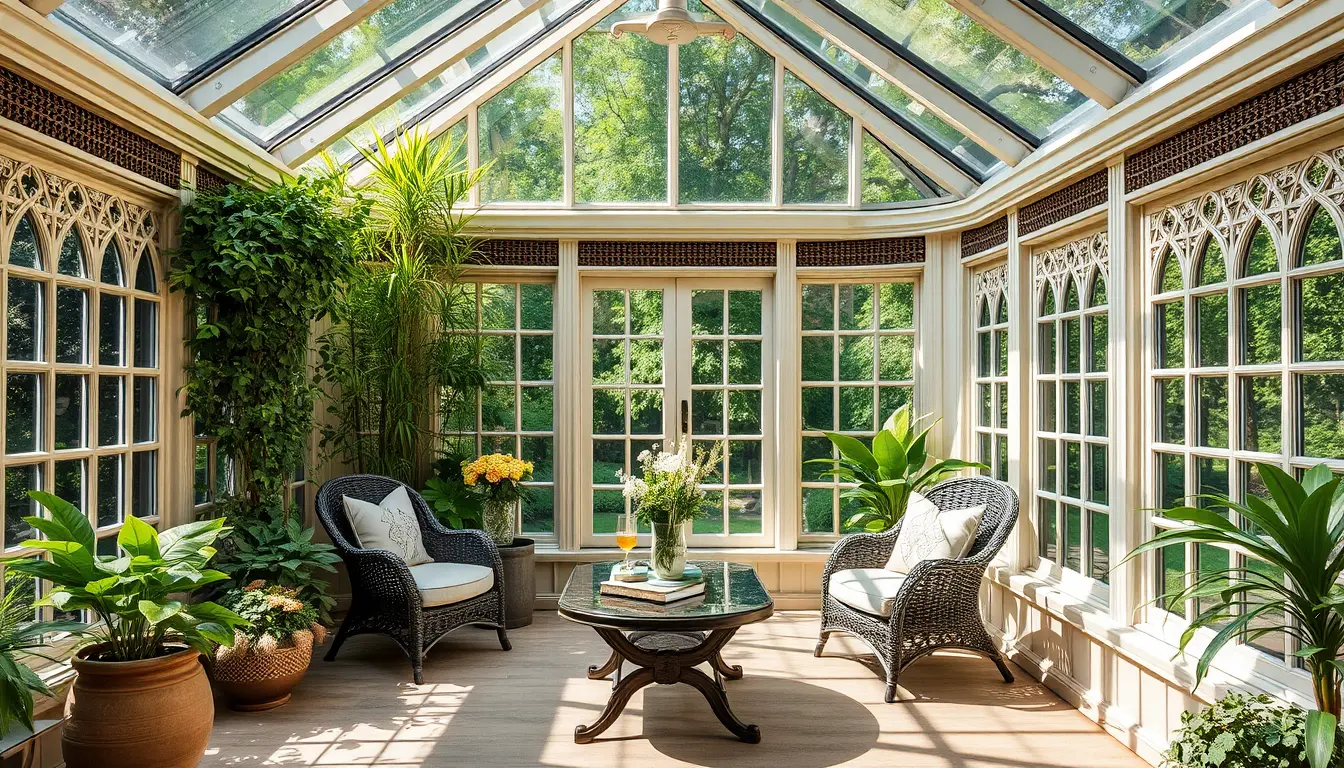
Natural Elements
* Incorporation of pressed flowers and botanical prints in modern ways
* Use of natural materials like cork, bamboo, and rattan in Victorian-style rooms
* Modern interpretation of Victorian herbarium displays
Outdoor Living Spaces
* Victorian-inspired garden rooms
* Modern interpretation of Victorian orangeries
* Blend of indoor and outdoor spaces using traditional Victorian design elements
Neo-Victorian Tech Integration
One of the most interesting trends I’m seeing is the creative integration of modern technology into Victorian-style spaces:
Hidden Tech
* Victorian-style cabinet work modified to hide modern entertainment systems
* Traditional picture frames converted to digital art displays
* Vintage-style light fixtures fitted with smart bulbs
Modern Functionality
* Victorian library tables adapted for home office use with built-in charging stations
* Traditional parlor layouts modified to accommodate modern media viewing
* Smart home features disguised with Victorian-style switch plates and covers
The “Grand Millennial” Movement
This trend deserves special attention because it’s revolutionizing how younger generations approach Victorian style:
Modern Color Interpretations
* Traditional Victorian patterns in pastel colorways
* Mixing of Victorian elements with contemporary colors
* Use of bold, unexpected color combinations in traditional spaces
Casual Victorian
* More relaxed interpretation of Victorian formal rooms
* Combination of Victorian pieces with casual, comfortable elements
* Use of performance fabrics on traditional forms
Personalized Details
* Victorian-inspired hand-crafted elements
* Custom monograms and personal touches
* Mix of family heirlooms with modern pieces
Victorian Minimalism (Yes, It Exists!)
This might sound like an oxymoron, but there’s a growing trend of combining Victorian elements with minimalist principles:
Simplified Victorian
* Use of single statement pieces in otherwise minimal rooms
* Victorian architectural details paired with simple, modern furnishings
* Clean-lined interpretations of Victorian furniture forms
Modern Materials
* Traditional Victorian patterns rendered in simple, monochromatic schemes
* Use of contemporary materials to recreate Victorian forms
* Streamlined versions of ornate Victorian details
Looking Ahead
As we move forward, I’m seeing some exciting emerging trends:
* Virtual Reality tours of historic Victorian homes influencing modern design choices
* 3D-printed Victorian-inspired decorative elements
* Smart technology designed specifically for historic home renovation
* Growing interest in Victorian-era sustainable living practices
* Increased focus on creating multi-functional spaces while maintaining Victorian aesthetics
Sustainable Style
I’m seeing more clients interested in sustainable Victorian-inspired decor. Buying authentic antiques is eco-friendly – it’s the ultimate in recycling! Plus, many companies now make beautiful Victorian-style furniture using sustainable materials.
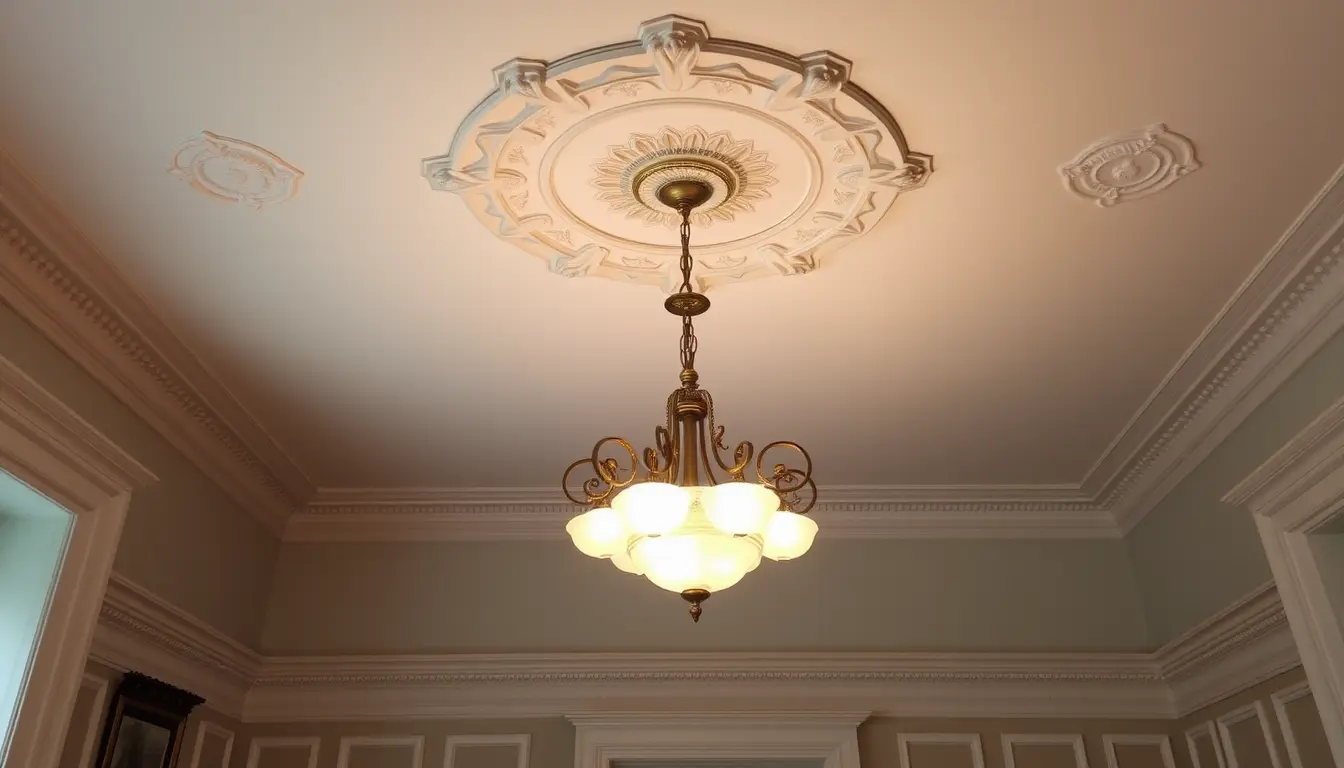
Bringing Nature Indoors
Victorians loved their plants, and this fits perfectly with today’s biophilic design trends. Try combining vintage-style planters with modern plant varieties, or use wallpaper with botanical prints inspired by Victorian designs.
Tips for Buying Victorian-Inspired Furniture and Decor
Where to Find Treasures
I’ll let you in on a secret: some of my best Victorian finds have come from unexpected places. Check out estate sales, flea markets, and online marketplaces. Don’t overlook Facebook Marketplace or local antique shops – you never know what gems you might discover.
Smart Shopping Strategies
If authentic Victorian pieces are out of your budget, many retailers offer beautiful reproductions. Look for quality construction and good materials – even in reproductions, these pieces should last for years.
For budget-friendly options, try updating existing furniture with Victorian-inspired details. A simple chair can look Victorian with the right upholstery, and basic molding can be layered to create more ornate effects.
Bringing It All Together
Victorian interior design is more than just a style – it’s about creating spaces that feel special and personal. Whether you go all-out Victorian or just add a few carefully chosen elements, the key is to make it your own.
Remember, the Victorians weren’t trying to copy anyone else’s style – they were creating something new and exciting for their time. We can do the same today, taking the best of Victorian design and making it work for modern life.
I encourage you to experiment and have fun with it. Start small if you’re unsure – maybe with a vintage mirror or a Victorian-inspired pillow. You might be surprised at how these touches of the past can make your home feel more special and uniquely yours.
Trust me, there’s nothing quite like the feeling of walking into a room that perfectly balances Victorian elegance with modern comfort. It’s like stepping into a story where every piece has meaning, and every detail adds to the magic.
Find out more about Victorian architecture here.
